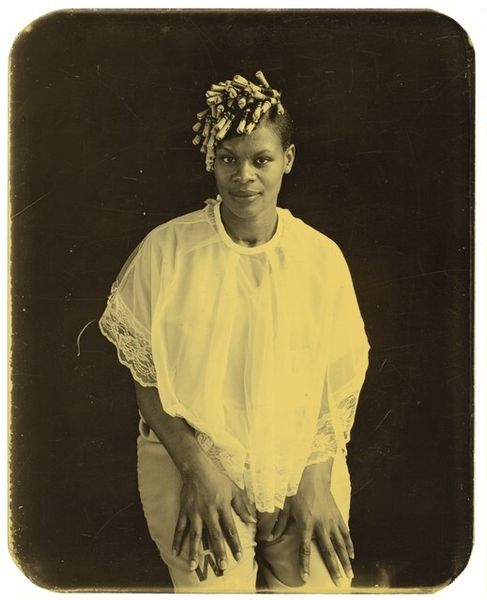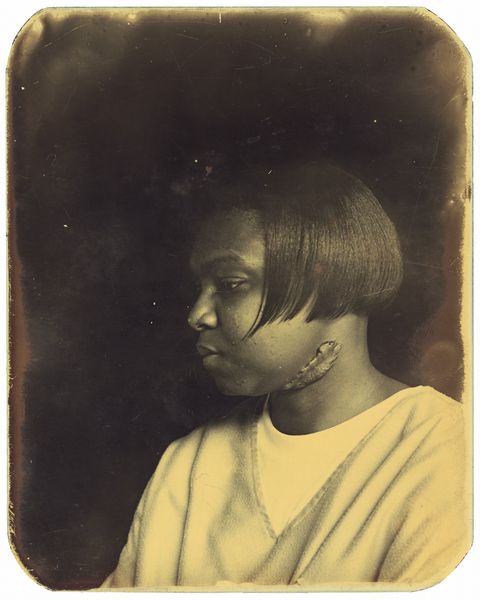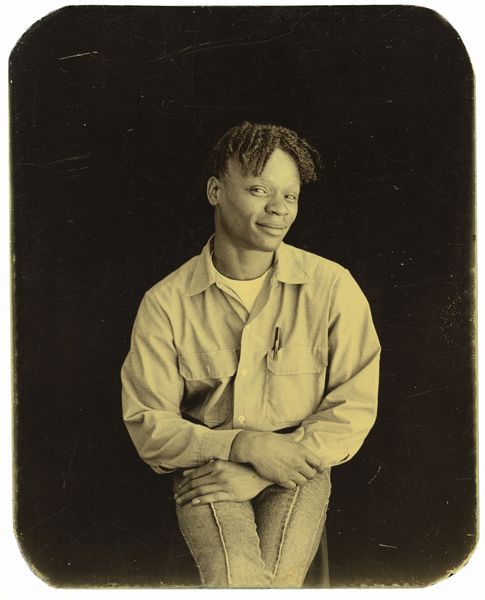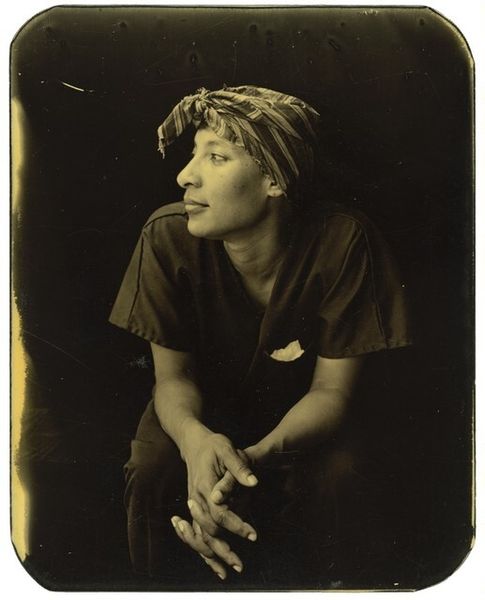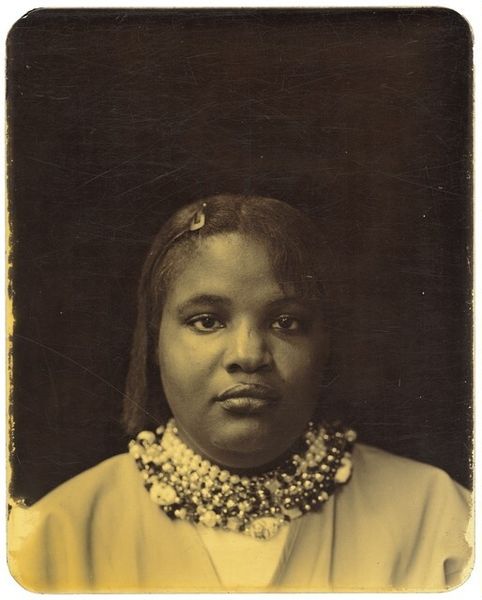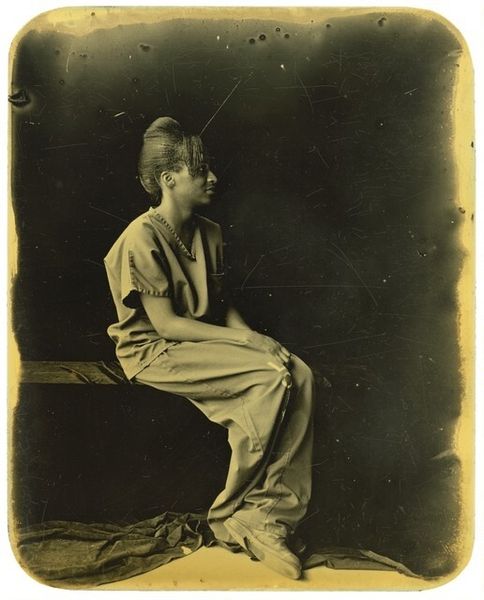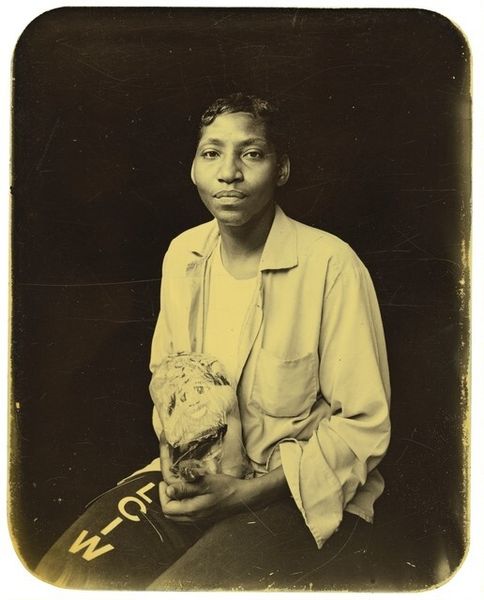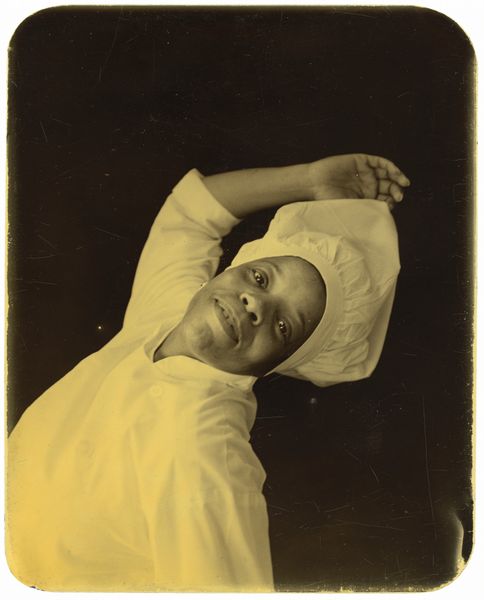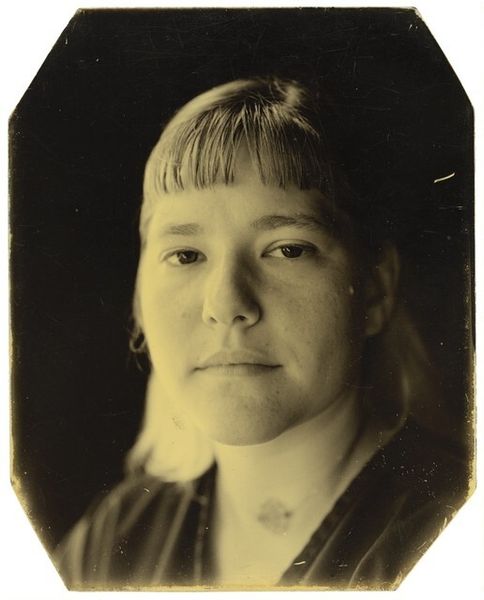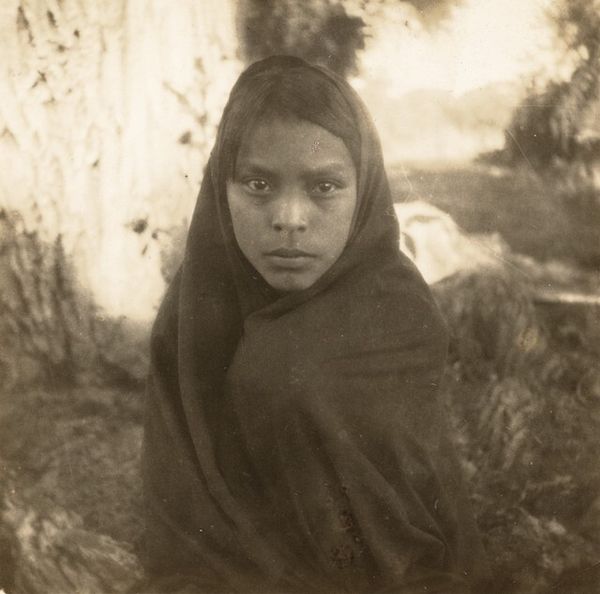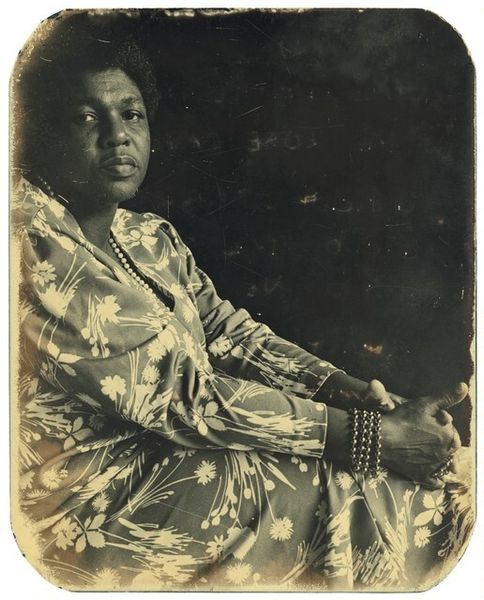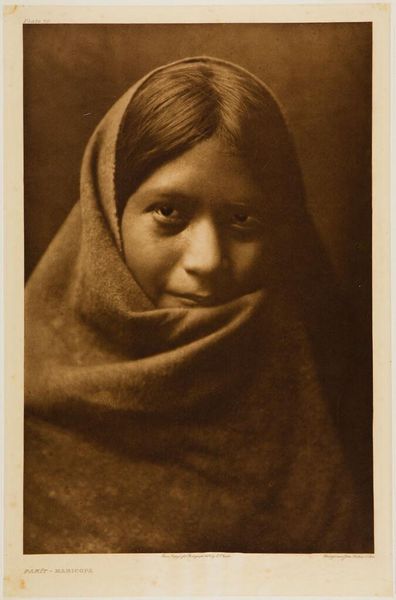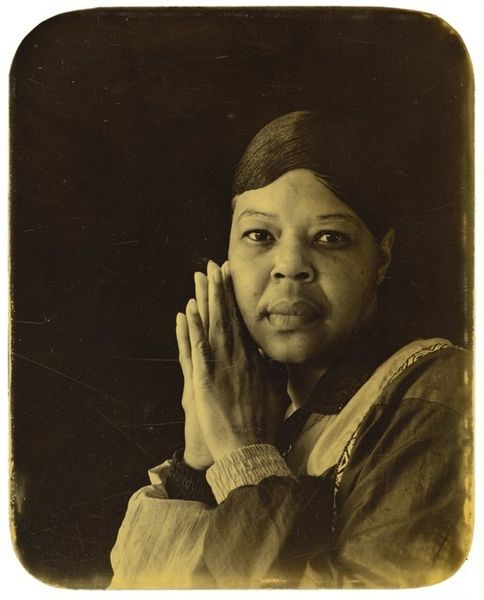
photography, gelatin-silver-print
#
portrait
#
portrait
#
photography
#
gelatin-silver-print
Dimensions: image/sheet: 5.4 × 5.4 cm (2 1/8 × 2 1/8 in.) mount: 13.3 × 10.4 cm (5 1/4 × 4 1/8 in.)
Copyright: National Gallery of Art: CC0 1.0
Curator: Dorothea Lange’s photographic portrait, "Native American Girl, Taos, New Mexico" from 1931, captures a young woman standing against a stark wall. What strikes you first? Editor: Immediately, the texture. The shawl's drape, how the light reveals its weave against the raw wall beside her. It speaks to me of handmade things, the labor involved in cloth, in building—all done with human hands, of course. Curator: Yes, there is a stark contrast there, which emphasizes the very deliberate composition. Note how Lange’s uses the backdrop: that textured wall serves to throw the girl’s features and clothing into sharper focus; it serves a clear artistic intention. The shadow cast upon her body creates diagonal vectors—emphasizing dynamism, albeit restrained, of the photograph. Editor: I find myself thinking about the textile itself, though. Is it locally made? What's the process, the plant dyes used? Those questions shape how I read her expression. It could inform this historical record—that the girl looks like a person living between tradition and transition—what happens to the textiles, to the knowledge of materials, when traditions fade, too? Curator: That's a poignant observation. Consider the broader semiotic context. The photograph's stark realism aims for a seemingly objective depiction. Yet, it undeniably evokes pathos through this girl’s downward glance, framed as she is by her head covering and clasped arms. Does she invite or deflect our gaze, caught as she is here? The framing of realism allows other art movements and intentions. Editor: Absolutely, and those details matter—material reality grounding emotional impact. The dirt embedded into that textured background whispers about real life and work. This image can, if we allow it, tell a visual story not just about artifice, but of making and endurance of what lasts and why. Curator: Well said. This photograph compels us to consider not just what we see, but also how its formal choices speak to the very nature of representation itself, while raising pressing questions on cultural contexts that help form our understanding. Editor: For me, it's the layers of lived experience, how each resource and its making speaks of values, community, survival—and how it shapes the personhood that looks out from her face.
Comments
No comments
Be the first to comment and join the conversation on the ultimate creative platform.

